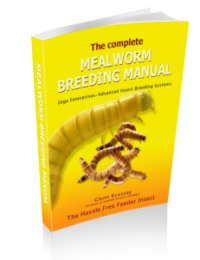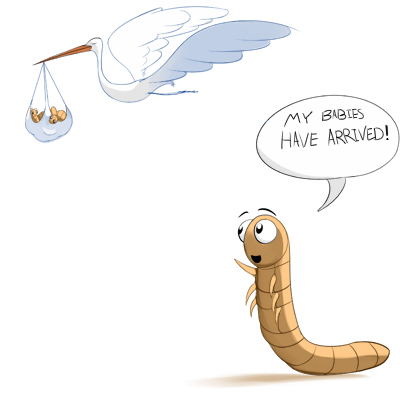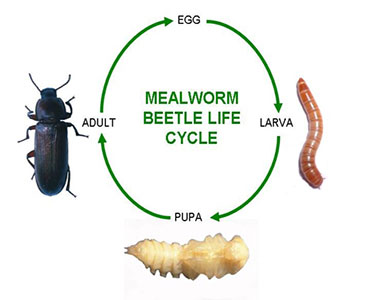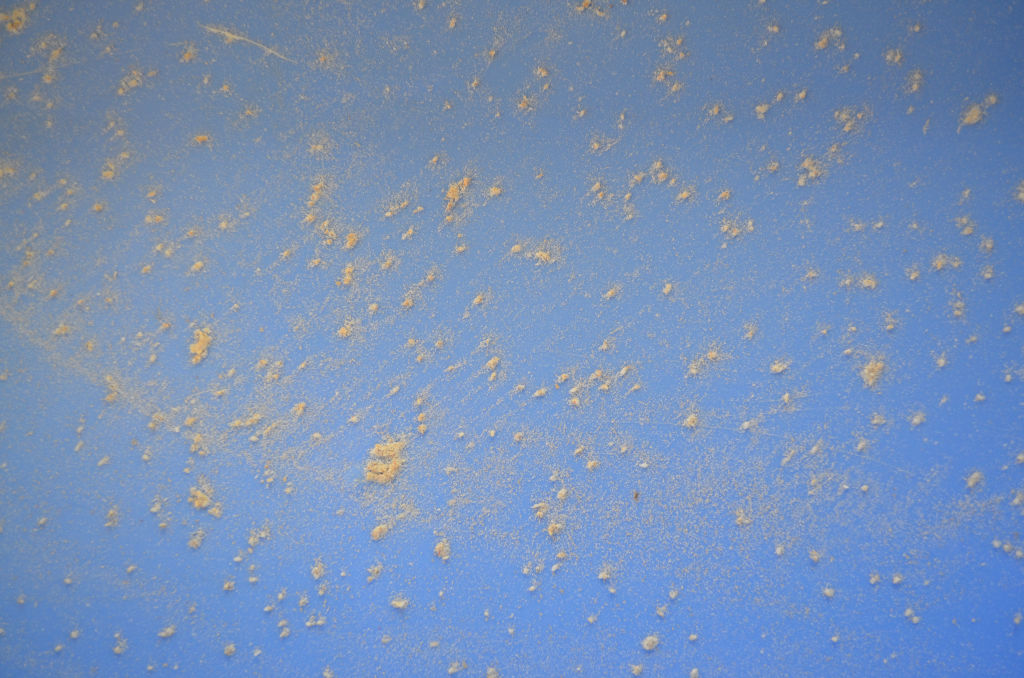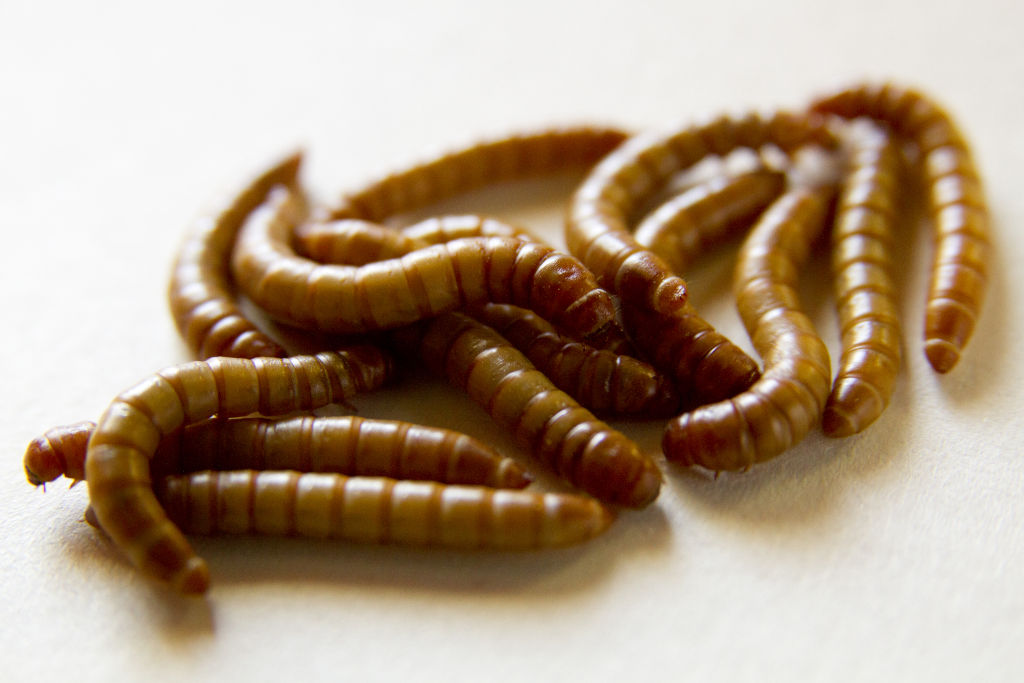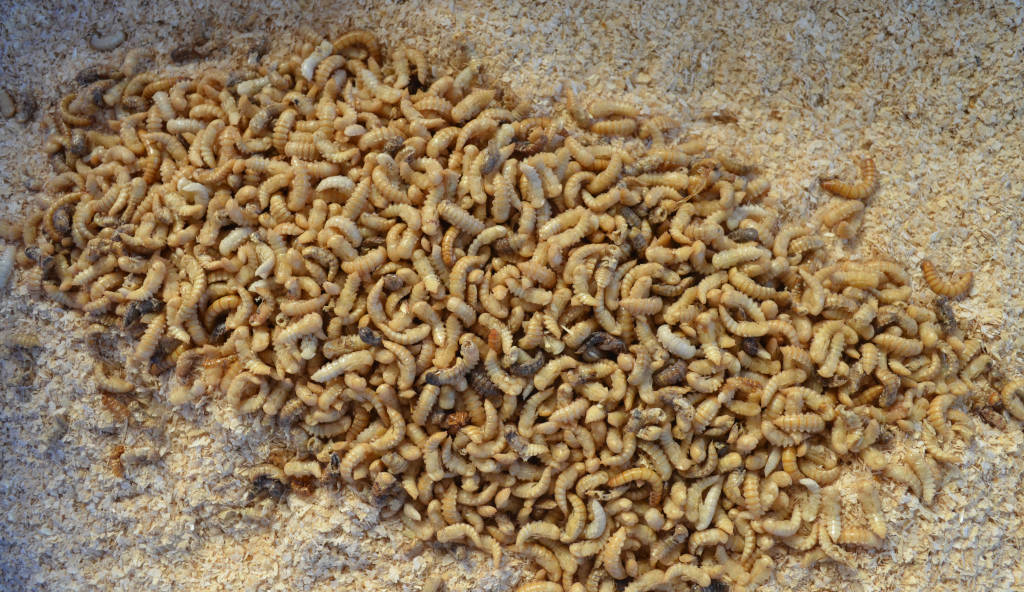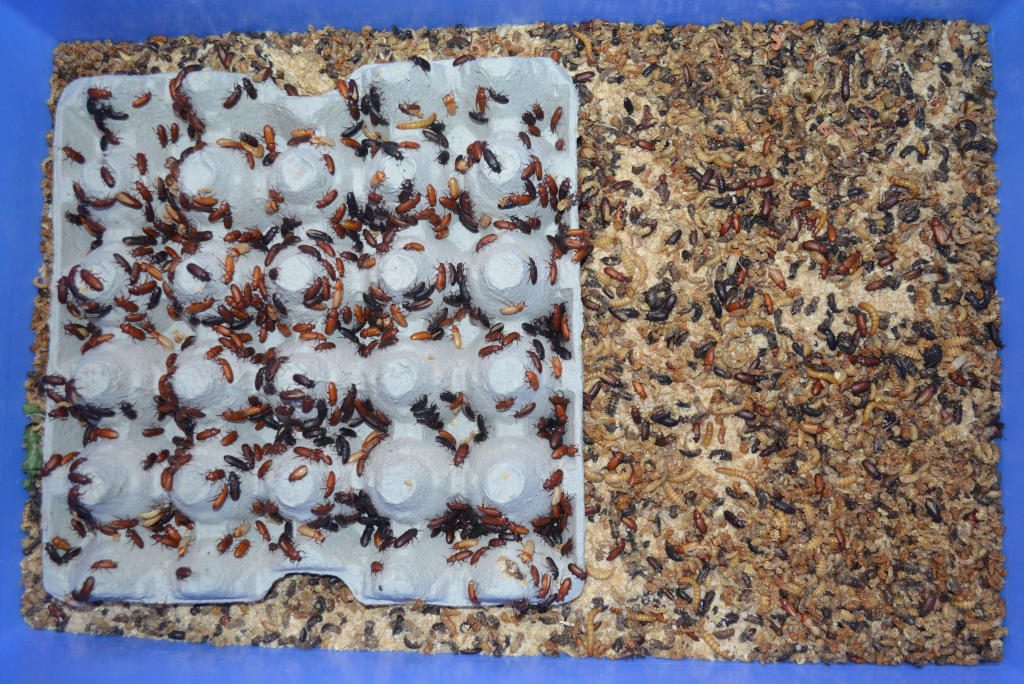Understand this and you will Produce Twice as Many Mealworms !
Once you understand the life cycle of the mealworm, keeping them will be a whole lot easier and you will be able to produce lots more. Yellow mealworms are not worms as you may first expect, they are actually the larvae (immature stage) of the Darkling Beetle (Tenebrio molitor).
Separating the different life cycles is essential for productive mealworm breeding to prevent cannibalism. Every life stage can eat all younger stage. ie mealworms eat eggs, beetles eat mealworms and eggs.
Below we give you a summary of each life stage. Each person will have a different set up, so don’t be surprised or disappointed if they don’t appear on the exact week you were expecting.
Breeding Summary
Understanding the lifecycle of a yellow mealworm (Tenebrio molitor) is essential to manage an efficient colony. As shown below the lifecycle of the mealworm comprises of the following 4 distinct stages (eggs, worms, pupae, beetle). Development times between the different stages varies greatly (moderately synchronized) even with climatically controlled conditions. Most development follows a typical bell shape curve with some developing early, the bulk developing in the middle and some developing late.
For this reason many of the figures provided are an average for the bulk of the life stage (middle of the bell curve). On average it takes approximately 10-12 weeks (3-4 months) for a mealworm to go from egg to adult size. The beetle stage will go for another 8-12 weeks (2-3 months). All figures assume climate control at 25-28 degrees and relative humidity at 50-60%. At cooler temperatures the time durations will be much longer (ie double or more).
Eggs
- It takes approximately two weeks for the adult beetle to mate and lay eggs after it emerges from the pupae (cocoon).
- Each female beetle can lay 100-200 eggs at a time and up to 500 over their life.
- Eggs are laid to any surface which may be substrate, container bottom or egg cartons. Check for eggs by looking at small white dots about 2mm in diameter on the bottom of the container (refer to adjacent photo).
Larvae (Worms)
General
Large mealworms will eat smaller mealworms so separation is essential for productive breeding.
Hatching
– Mealworms hatch approximately 7-10 days later although it will take much longer for non optimal conditions (up to 4-8 weeks for low temperatures).
– It may take a few weeks before the baby mealworms are large enough to see with the naked eye. Most will hang around or on the wet food. They are best observed just after you have turned on the lights at night.
– Newly hatched mealworms are tiny around 3mm long (0.12 inches), white to light orange, and have 6 legs and feelers. As they mature they change color to a darker orange/brown.
Molting
Worms go through approximately 15-23 instars or molts before finally developing into a pupae. After Each molt they are susceptible to dehydration so its important to maintain sufficient humidity and wet foods. They are also more susceptible to higher temperatures.
Growing Times
Yellow mealworms takes approximately 10-12 weeks (2.5-3 months), at 25-28 degrees to reach large size. Non optimal conditions will take longer. It takes approximately 2 weeks to go from medium to large size.
Pupae
General
– The pupae is an intermediate stage (teenager) between the mealworm (immature) and beetle stage (adult). The pupae looks like a white wiggly cocoon, similar to a butterfly pupa.
– “pupa” is singular and “pupae” is plural. Often the two words are used interchangeable.
– The pupae does not require any food or a direct moisture (i.e. fruit or vegetables).
– Pupae are a yellow/orange color which helps them avoid being detected by predators in their meal substrate.
Important Note:
Superworms (mature worms about to go to pupa) require a lot of food and moisture at this stage, as they are preparing for the pupae stage which is unable to take food or water. Lack of adequate hydration is a key reason pupa dye which results in a significant reduction in the production capacity of the farm.
Pupa to Beetle
– In normal conditions it takes around 1 week for most pupae to develop to beetle however there are some that take longer up to 3 weeks (Moderately synchronized).
– Change of weather or climate conditions can trigger metamorphosis from pupa to beetle also. For instance we noticed pupa which had been sitting for weeks in hot 35-40 degrees (95-104 Fahrenheit) with no climate control in summer, went to pupae overnight when we commenced air conditioner set to 25-28 degrees (77-82 Fahrenheit).
Growing Times
Pupa development varies greatly (moderately synchronized) with some coming early, and others much later. Most mealworms will take around 10-12 weeks (3-6 months) to reach the large size and can take a number of weeks further before they go to pupa stage.
Factors that Slow Down Pupa Development include: high worm densities, high or low temperatures and humidity (see following sections), insufficient wet and dry food (substrate) and infrequent removal of frass.
Factors that Increase Pupa Development include: low worm densities, optimal temperature and humidity levels (see following sections), regular removal of frass.
Causes of Death: Pupa are the most vulnerable life stage and have high death rates if not managed properly. Normal death rates on the lower end are around 10% and up to 25% at the higher end.
Beetles (Adults)
General
– Beetles are the adult stage of the life cycle, and they lay the eggs in the mealworm substrate.
– After emerging from the pupa, they will appear white, but quickly darken to have a black shiny shell. They have wings but will not fly away.
– The adult feeds on cereal, meal and wet foods.
– As beetles eat mealworms they should be removed from the container as soon as they appear and placed into a second container where they can lay their eggs into the mealworm substrate.
Life Expectancy
– Beetles have an average life expectancy of approximately 3-6 months depending on temperature. Productive breeding occurs in the first 4-6 weeks. All life stages has a bell shape curve, with some dying earlier, the most dying in the middle and some taking longer.
– Approximately 10-14 days after they emerge from the pupa, they are able to mate and lay eggs into the substrate. Remember that the eggs are mixed in with the poo (frass) at the bottom of the container and this will provide you with the next generation, so don’t throw it all out.


